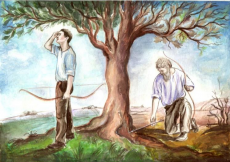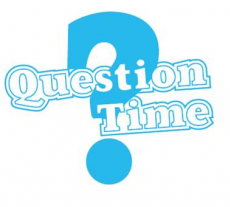
Email: ZYVC057@live.rhul.ac.uk
Total Article : 213
About Me:I'm a graduate student studying International Criminal Law and first started writing for King's News almost 4 years ago! My hobbies include reading, travelling and charity work. I cover many categories but my favourite articles to write are about mysteries of the ancient world, interesting places to visit, the Italian language and animals!

‘The Arrow and the Song’ was written by Henry Wadsworth Longfellow on October 16, 1845. Longfellow composed the poem whilst sitting with his back to the fire and describes the poem coming to him as fast as an arrow would, whilst the poem isn’t quite an improvisation it was surely written on the spur of the moment!
The poem consists of three stanzas (a group of lines which form a unit in the poem, almost like a paragraph in prose), each of which is four lines long. The rhyming scheme is pretty simple and playfully consists of couplets (a rhyming scheme AA, BB etc.) and each line has eight or nine syllables giving the poem a unanimous musical tone when read. The first two stanzas mimic each other and even have an identical line (‘it fell to earth, I knew not where’). The parallelism of the stanzas is evident as the speaker repeats a similar layout in his reasoning: in the first stanza the speaker recalls an action (‘I shot an arrow in the air’), states that he cannot follow what would happen after and then explains why he was not able to do so then, in the second stanza, the speaker uses the exact same layout but with a different object (‘I breathed a song into the air’). The third stanza explains what happened to both the arrow. One way of interpreting this poem is that the arrow represents words of anger and as such, one thrown, remains there unbroken and still fragile. This means that anger is hard to forget, yet the song breathed into the air represents words of kindness, that can spread just like the sound of a song, and is then found in the heart of a friend. According to this reasoning, such a simple, playful poem can hold a deeper, moral meaning and through word games and melodious rhythm Longfellow urges us all to be kinder.
The Arrow and the Song
I shot an arrow into the air,
It fell to earth, I knew not where;
For, so swiftly it flew, the sight
Could not follow it in its flight.
I breathed a song into the air,
It fell to earth, I knew not where;
For who has sight so keen and strong,
That it can follow the flight of song?
Long, long afterward, in an oak
I found the arrow, still unbroke;
And the song, from beginning to end,
I found again in the heart of a friend.

Question time!
So, now that you’ve read the poem – and hopefully enjoyed it – it’s time to think a little more about some of the meanings hidden within the poem, in particular when considering the arrow described by the speaker in the first and third stanzas. Here are just a few questions worth considering, why not drop us a comment with your answer!
- Why does the speaker throw the arrow in the air? Is he hunting or could it be a metaphor for an action the speaker took (like hurting somebody with his words)?
- Does the arrow symbolise anger and hatred as it is a war instrument or does it symbolise love like Cupid’s arrow?
- The arrow was found in an oak. Again this can be traced back to love as lovers would often right their names on an oak, could this mean that love has gone wrong?
- Is it a good or bad thing that the arrow remained unbroken? Is it dangerous that the arrow never broke?
Image1: http://www.theepochtimes.com/n2/images/stories/large/2009/05/18/AntidoteLongfellow.jpg
Image 2: http://www.yorkshiregraduates.co.uk/images/gyblog/gyqt.jpg

0 Comment:
Be the first one to comment on this article.